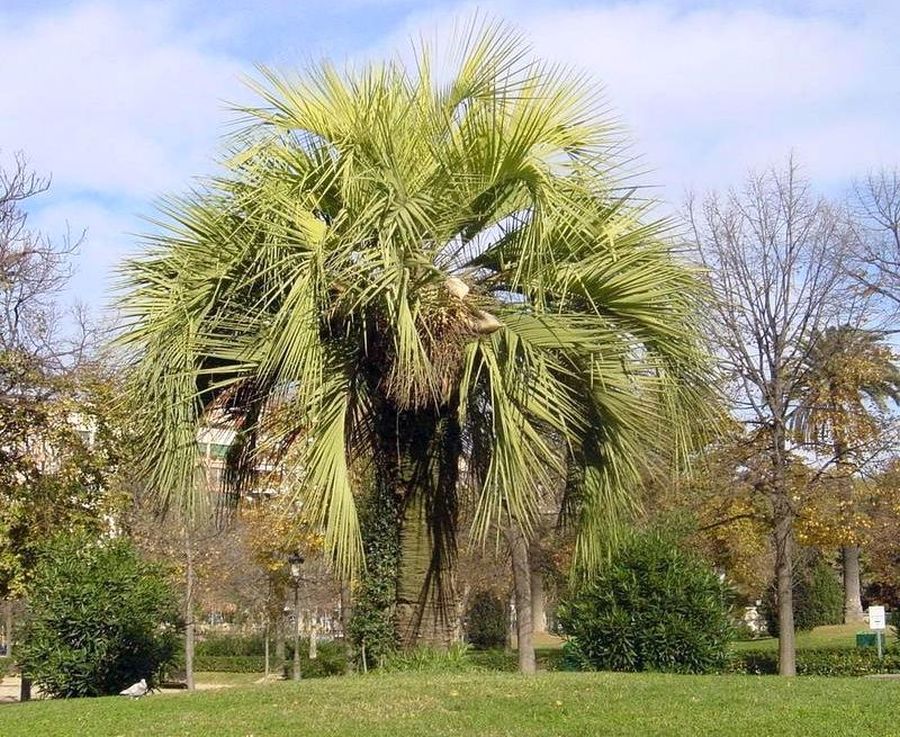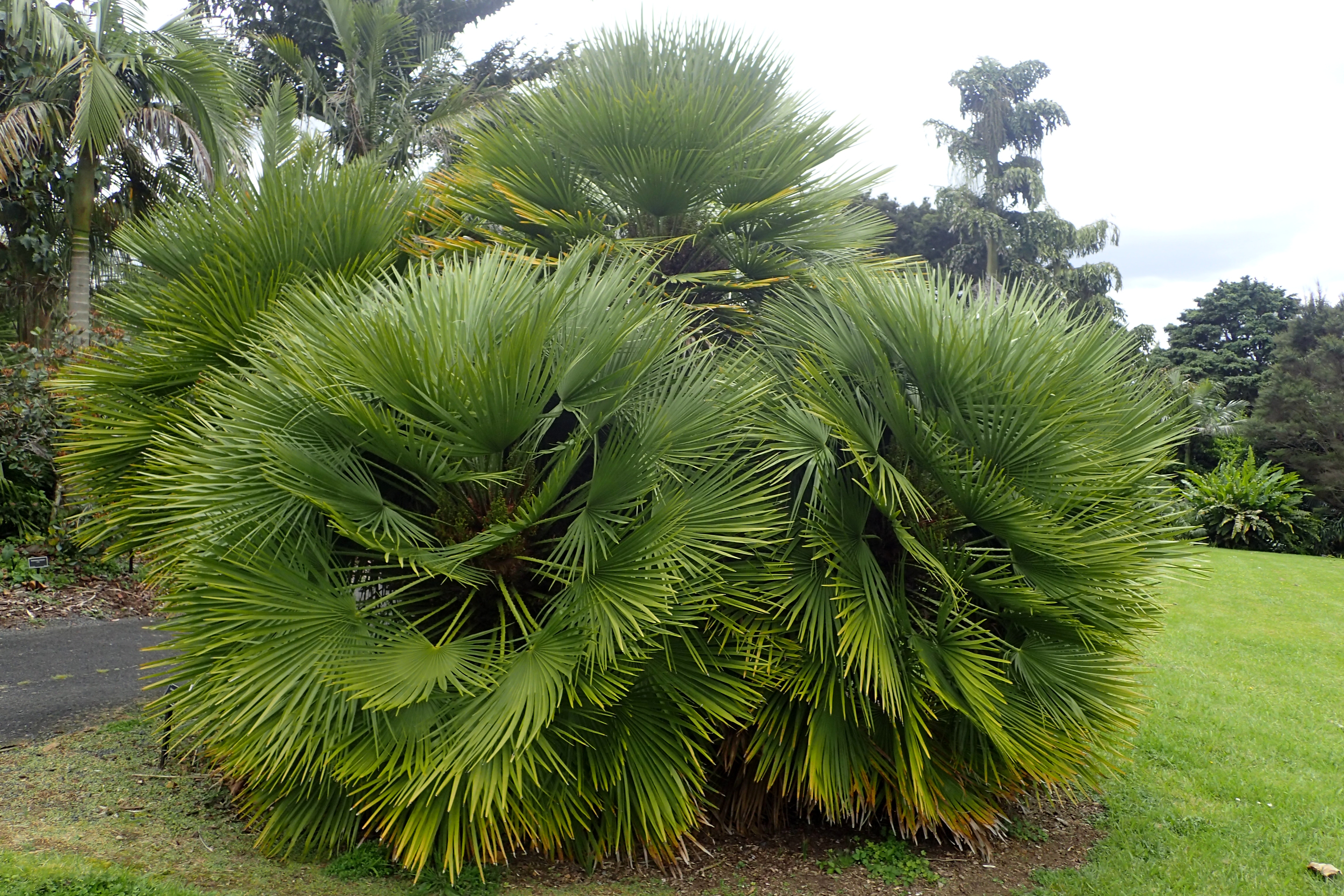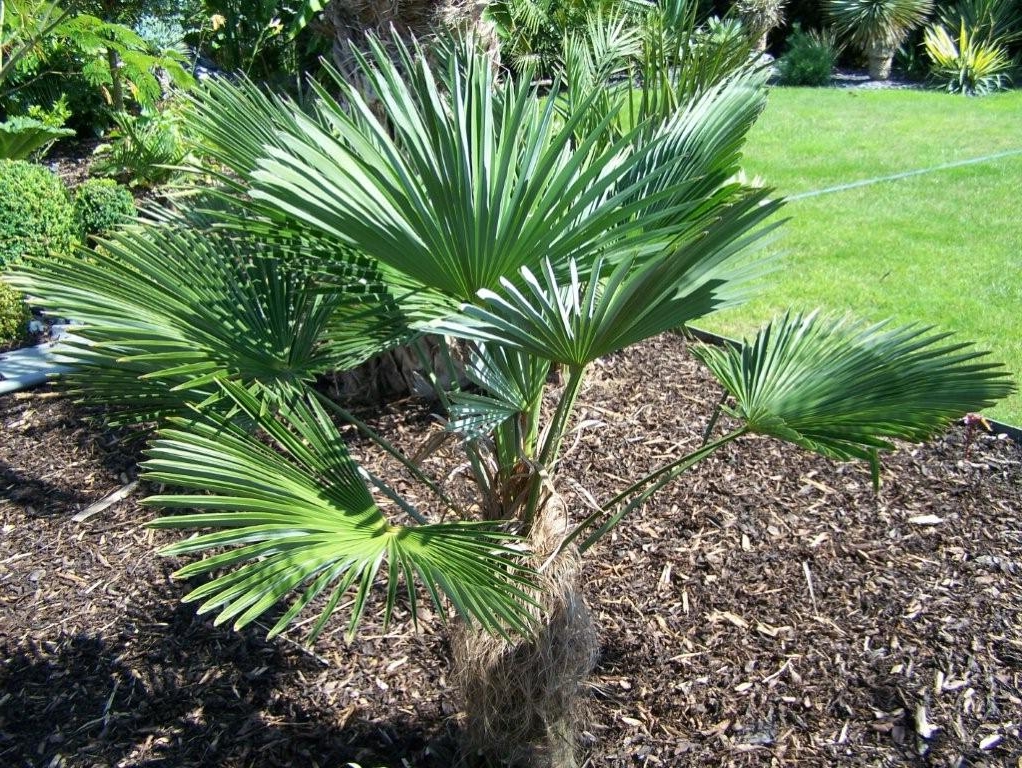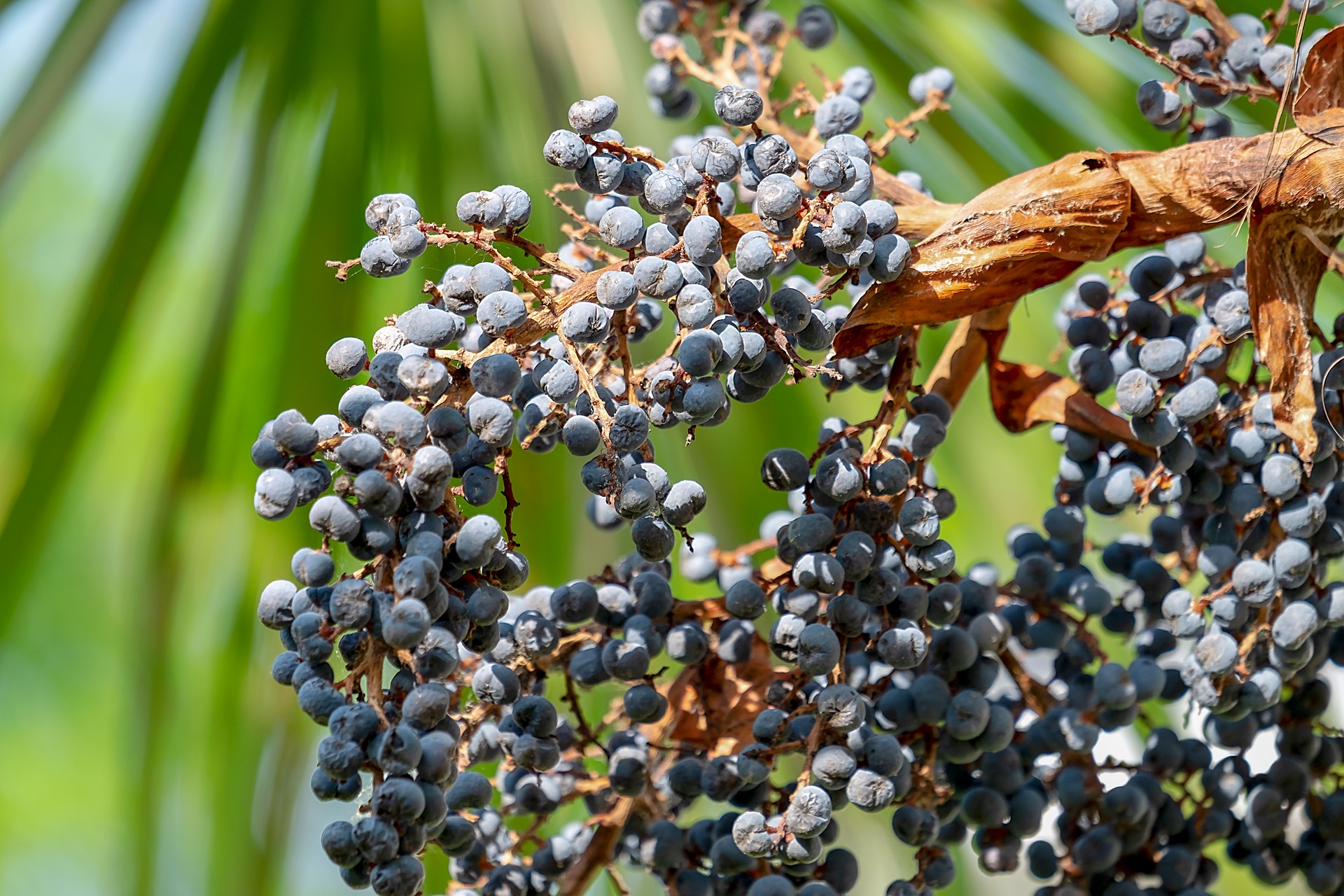Apr 18, 2018
by lepalms
Brazil, butia palms, butia yatay, conservation, cultivation, ecological, environmental, Europe, European, Florida, forestation, forestry, gardening, Germany, greening, hardy, hardy palms, jelly palms, Leipzig, Leipzig Palms, Leipziger, news, nursery, palm trees, palms, research, shop, South america, sustainable, United States, winter
Butia palms or jelly palms are diverse crops and useful plants. In their countries of origin, the jelly palm is grown as a crop, because the plants carry plum-sized fruits, which are suitable for direct consumption as well as for the production of jelly and marmalades. The taste has similarities to peaches and pineapple. The particularly nutritious kernels are excellent for producing animal feed but also eaten as a nut.
From single seeds up to three seedlings can grow. The frost resistance varies depending on the plant between -8 °C and -15 °C. Butia is one quite undemanding palm, which is also suitable for planting in mild areas here with us. It makes low demands on the ground, prefers a high sand content and thus good drainage, but then would like to be poured abundantly in summer. Like the origin from a very precipitous area suggests, it has no problems with wet. The substrate should always be slightly damp being held. Suitable substrate is coconut fiber substrate, vermiculite, perlite or a mixture of these three substrate types. All these substrates are germ-free and provide good moisture retention. The jelly palm prefers the brightest possible location with good sunlight. Most palm seeds germinate in reasonable conditions within one to three months. https://en.wikipedia.org/wiki/Butia
LE Palms (Leipzig Palms) cultivates the three species Butia capitata, Butia odorata and Butia yatay. These varieties are very resistant or robust and tolerate frost and a bit more cold temperatures, so they are relatively winter hardy. Winter protection themes will be described in a few more articles this year.
Butia capitata, also known as jelly palm, is a palm native to Argentina, Brazil and Uruguay. This palm grows up to 8m (exceptionally 10m) in an
extremely fast manner. It is easily identifiable with feather palm pinnate leaves that arch inwards towards a thick stout trunk.
Butia capitata is notable as one of the hardiest feather palms, tolerating temperatures down to about -10 °C; it is widely cultivated in temperate climates. In the United States, B. capitata is grown along the West Coast from San Diego to Seattle, and along the East Coast from Florida to Virginia Beach, with a few known plantings north to the Long Island, NY area. Butia capitata has become naturalized in some areas of the Southern United States, from Virginia to Florida.
Ripe fruit are about the size of large cherry, and yellowish/orange in color, but can also include a blush towards the tip. The taste is a mixture of pineapple, apricot, and vanilla. Taste can vary depending on soil conditions, and the tastes of apple, pineapple, and banana together is also common. It is tart and sweet at the same time, with a flesh similar to a loquat, but slightly more fibrous. https://en.wikipedia.org/wiki/Butia_capitata
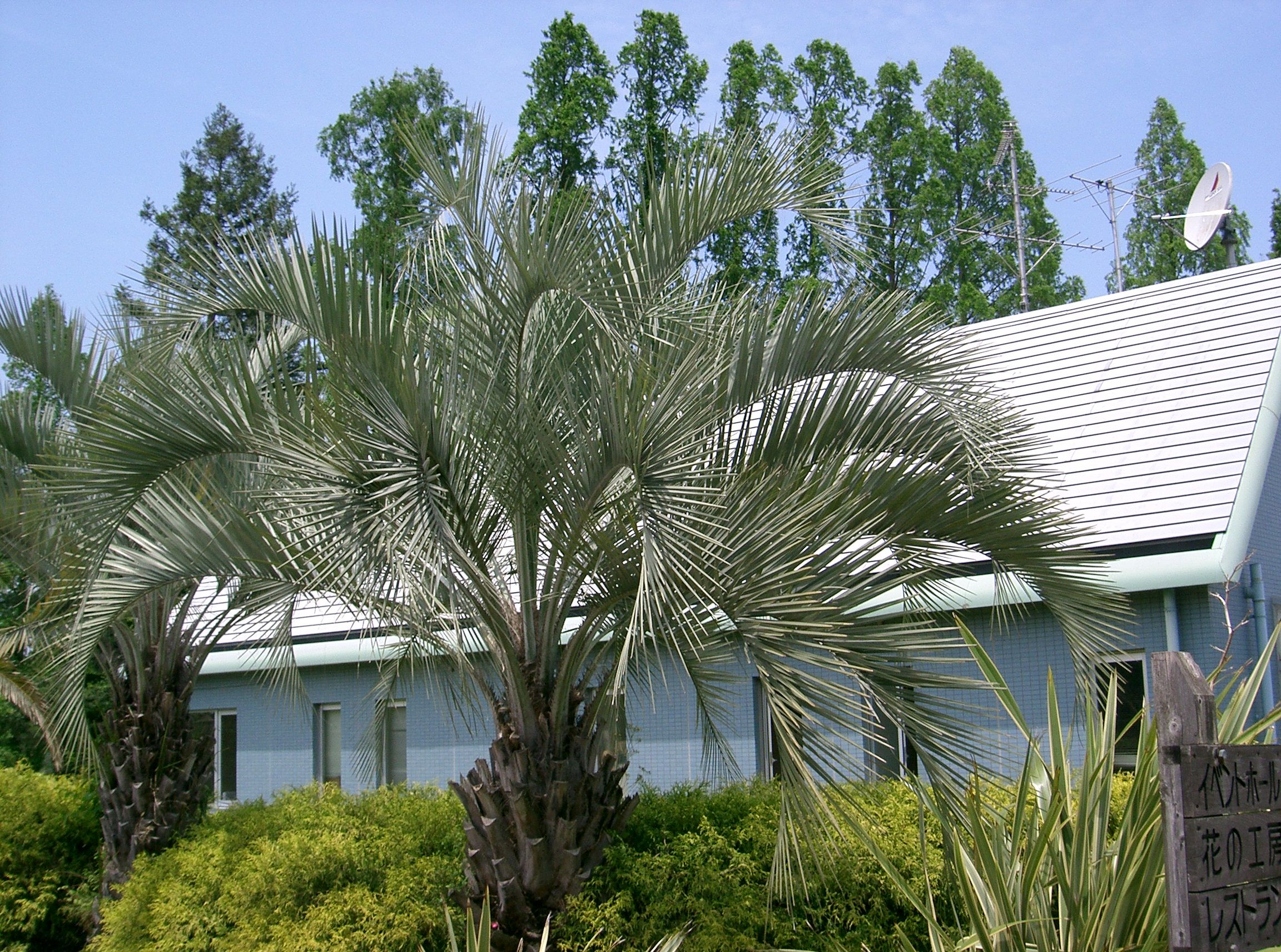
Butia odorata is native to the grasslands, and dry woodlands and savannahs of South America. Populations range across a wide area of northern Argentina, southern Brazil, Paraguay and Uruguay. Long pinnate leaves that arch and recurve towards the ground from atop a thick stout trunk. The trunk can grow to 20 feet, but normally reaches 12-15 ft (3.7-4.6 m) with a diameter of 1-1.5 ft (0.3-0.5 m). Trees 3-5 m tall, 40-50 cm in diam. This palm was also known incorrectly as Butia capitata for many years. The true Butia capitata was first described and named by Martius as Cocos capitata in 1826. It was discovered in the state of Minas Gerais by Martius near the town of Montes Claros and is a cerrado-loving palm endemic to the central planalto region of Brazil. It is a very different palm from the more robust coastal plane or restinga-loving “Butia capitata” of Uruguay and Rio Grande do Sul, Brazil.
Full sun to moderate shade (the fronds grow longer in shady situations, giving the palm a more graceful aspect than those grown in full sun). Prefers sandy, well drained soil but is adaptable and very drought tolerant. Regular watering and feeding will produce a faster growing, more attractive palm. http://www.palmpedia.net/wiki/Butia_odorata
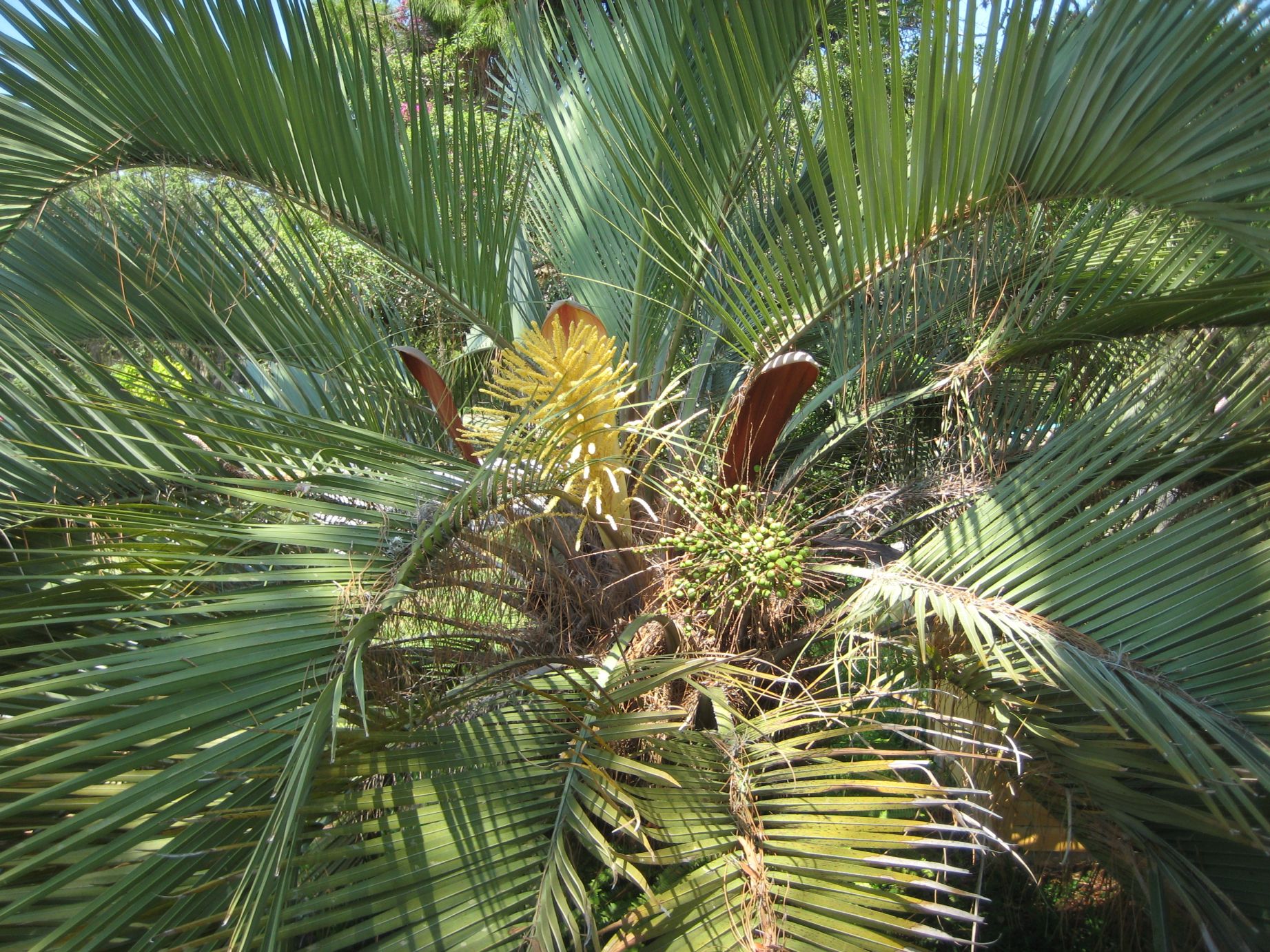
Butia odorata can tolerate freezing temperatures to about -15°C (5°F). It naturally occurs in open, sun exposed, montane or lowland hilly
locations, and should be planted to maximise sunshine exposure.
Butia yatay is long-lived, can grow up to 12 meters and is thus higher than most other species of the genus Butia. Her tribe is from covered with dark leaf bases. The up to 2 m long, bluish leaves are pinnate. The yellow inflorescences contain up to 100 flowers. The fruits have a diameter of 3 to 5 cm and are not edible for humans. But they attract many birds and were the main food of the probably extinct turquoise macaw. In its region of origin in the south of Brazil, Uruguay and northeastern Argentina, the Yatay palm once formed large forests. She grew up there on sandy soil. Many of them were cleared for agricultural use. The largest preserved Yatay forest is located on one area of approximately 85 km² in the El Palmar National Park in the Argentine province of Entre Ríos. Today Butia yatay is also subtropical in other Regions planted as a decorative palm. It also tolerates dry heat.
